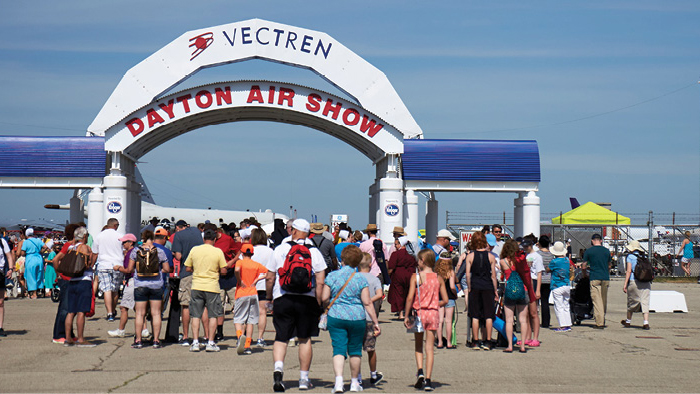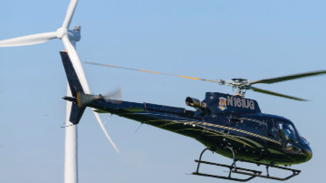
Save airshows, too, AOPA says
Industry rallies to support relief for aviation events
A coalition of general aviation organizations wrote to congressional committee leaders to highlight the reasons why airshows should be given the same consideration as concerts, movie theaters, museums, and other venues in the distribution of federal pandemic relief. Like many other businesses, airshows across the nation suffered greatly because of COVID-forced cancellations, eliminating the tremendous economic support they provide local communities.
The letter, signed by AOPA, the National Business Aviation Association, the General Aviation Manufacturers Association, the Experimental Aircraft Association, the National Air Transportation Association, and Helicopter Association International, reminded leaders of the Senate Committee on Small Business and Entrepreneurship and the House Committee on Small Business that the more than 300 events held each year attract more than 10 million visitors, provide a combined economic boost of nearly $900 million to cities and towns, and account for more than 20,000 jobs through hundreds of small businesses.
The letter stated that these events “provide the larger general aviation community with an opportunity to familiarize the public with general aviation and local airports” and “provide outreach to those who might otherwise have no exposure or understanding of the value and importance of aviation in their communities.”
The Consolidated Appropriations Act of 2021 that was signed into law on December 27 included the Economic Aid to Hard-Hit Small Businesses, Nonprofits, and Venues Act, which established the Shuttered Venue Operators Grant program. Congress provided $15 billion for the grant program to help entities hardest hit by the pandemic. The letter asks that airshows be considered by the Small Business Administration in the same manner as other entertainment and live venue events.
AOPA seeks to have glider pilots squawk 1202 for all VFR ops
AOPA submitted a proposal to the FAA requesting that beacon code 1202 become the standard for pilots flying gliders VFR to use regardless of whether they are in contact with air traffic control. Currently, the 1202 code is assigned to VFR glider operations that are not in contact with ATC to differentiate them from VFR traffic squawking 1200 because of the different nature of the operations.
While powered “VFR aircraft typically fly in straight, predictable path[s], gliders often make abrupt changes in direction and/or altitude,” AOPA said. “This makes it very important for ATC to be able to differentiate gliders from other aircraft.”
This change would help ATC better identify gliders flying near busy airspace and landing at towered airports, increasing safety in the airspace system. It would also allow glider pilots to operate using one code rather than having to change codes in flight, which can be difficult to do on a compact transponder and in a cramped cockpit.
Promoting community airports
By Mike Ginter, AOPA vice president of airports and state advocacy
 Most airport sponsors (aka local elected leaders) understand the value of their airport but, unfortunately, some do not. We saw this at Meigs Field in 2003, and we see it today in Santa Monica and Reid Hillview in California; Glenwood Springs, Colorado; and in other communities around the country. Protecting and promoting America’s community airports is a top priority—and saving them requires a coordinated local solution.
Most airport sponsors (aka local elected leaders) understand the value of their airport but, unfortunately, some do not. We saw this at Meigs Field in 2003, and we see it today in Santa Monica and Reid Hillview in California; Glenwood Springs, Colorado; and in other communities around the country. Protecting and promoting America’s community airports is a top priority—and saving them requires a coordinated local solution.
With more than 19,600 landing facilities, including 14,556 private airports/heliports and 5,080 public-use airports (3,304 of which are federally funded), just about every American community, large and small, is connected to the national transportation system. In fact, 99.7 percent of the U.S. population lives within 30 miles of a federally funded airport. Airports are engines of economic development and provide vital community benefit services. Our airport infrastructure is worth protecting; once an airport is gone, it will not come back.
Our staff partners with more than 1,900 dedicated Airport Support Network volunteers who proactively engage their local airport leadership when issues arise. Resolving airport issues, including saving an airport from closure, always requires local and continuous involvement by pilots, airport business owners, and the local community—and when these local voices unite with a common message, city hall usually listens!
Email [email protected]
On the front lines
Wind turbines and community airports make lousy neighbors
 The proliferation of wind turbine farms near airports is a growing challenge for airport managers, state aviation officials, and pilots across the nation, but nowhere quite as much as in the Central and Southwest regions.
The proliferation of wind turbine farms near airports is a growing challenge for airport managers, state aviation officials, and pilots across the nation, but nowhere quite as much as in the Central and Southwest regions.
Although the FAA’s Obstacle Evaluation/Airport Airspace Analysis (OE/AAA) division does evaluate each turbine for effects to the national airspace system, protecting airports and airspace is really a state and local matter. A “Determination of No Hazard” from OE/AAA does not permit a structure to be built, and a “Determination of Hazard” will not prevent construction either. Local and state zoning laws are the primary tools to prevent the construction of wind turbines and other tall structures near publicly owned airports.
AOPA’s regional managers are on the front lines helping airports and states navigate the effects of the explosive growth of the wind energy industry on aviation across the nation. At the state level, we promote airport and airspace protection legislation, while locally we encourage airport sponsors (often the city or county) to develop zoning ordinances that will provide the legal basis for preventing the construction of tall structures that would negatively impact the airport or associated airspace. —Tom Chandler, AOPA Central Southwest regional manager
Protecting and promoting airports is critical to the future of aviation. Become an AOPA Airport Support Network (ASN) volunteer.


